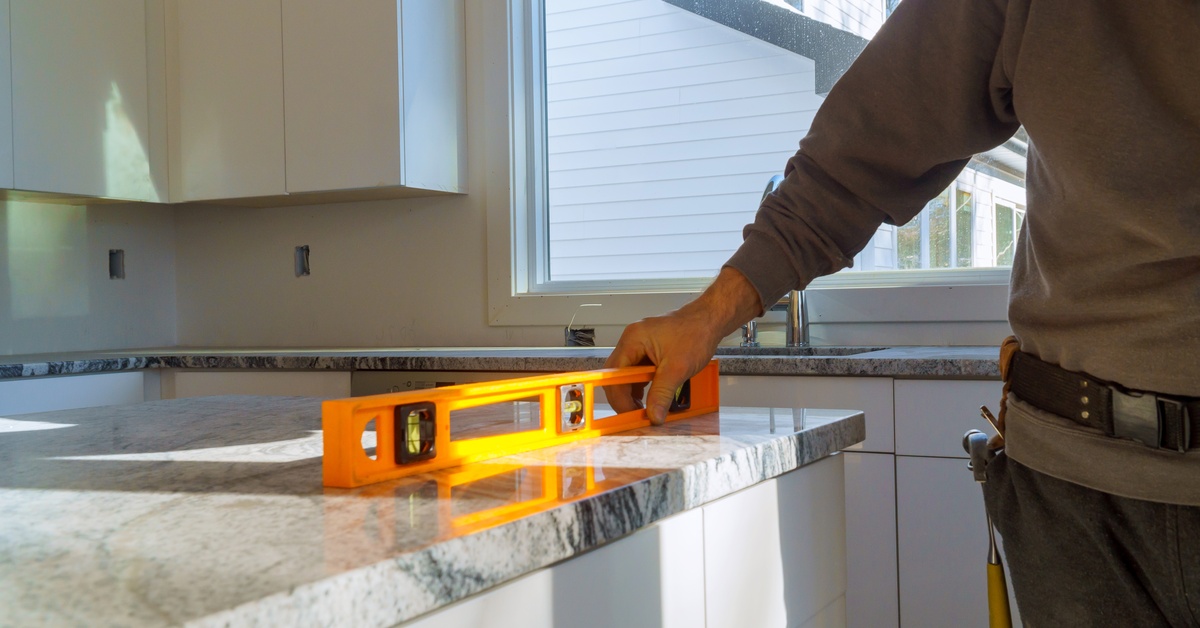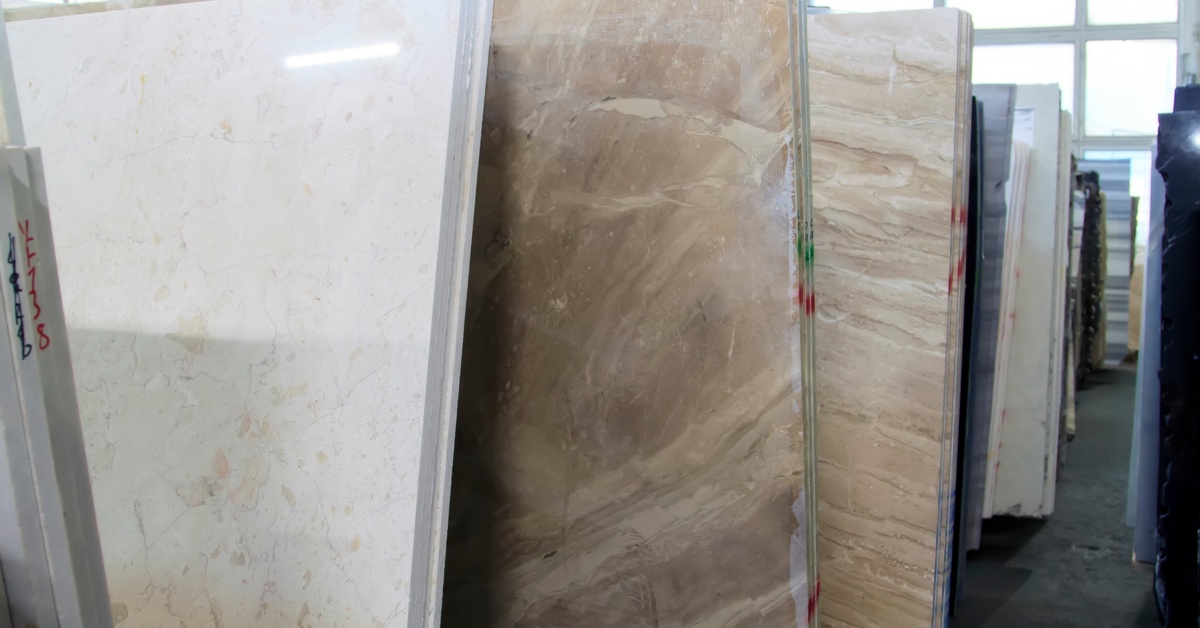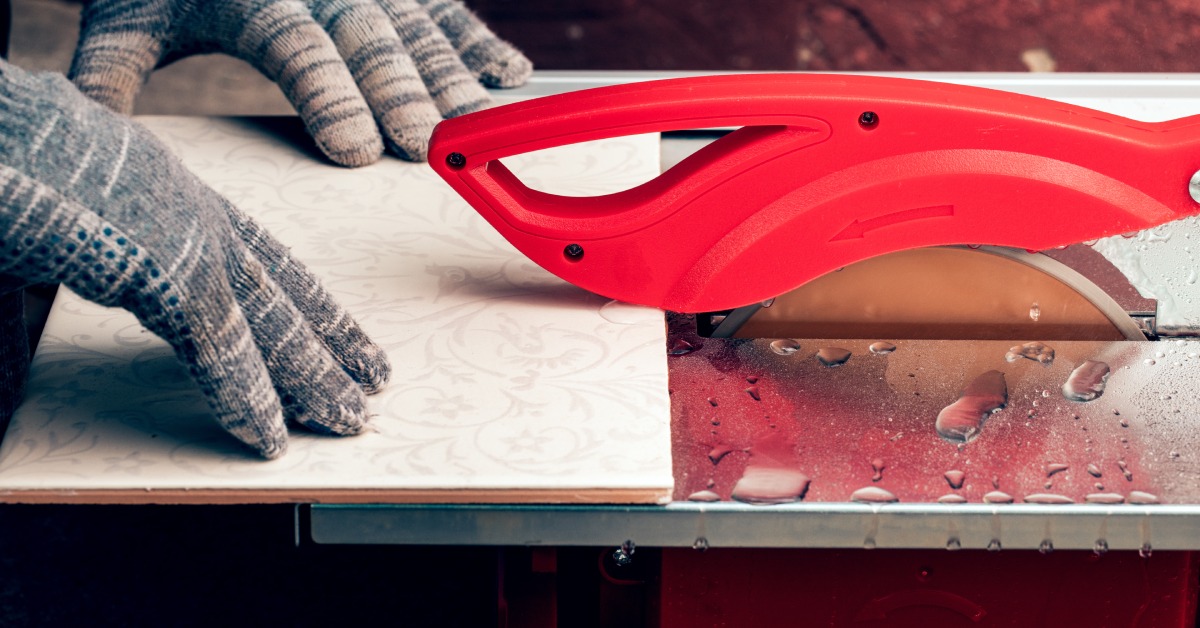Manual vs. Automatic Tile Cutters: Which Is Best for You?
Deciding between manual and automatic tile cutters? Compare their features, efficiency, and ease of use to choose the right tool for precise tile cutting.

FREE Shipping Over $250 (Freight/Pallet Shipments Not Included)
Deciding between manual and automatic tile cutters? Compare their features, efficiency, and ease of use to choose the right tool for precise tile cutting.
Material handling has evolved with groundbreaking advancements that enhance efficiency, safety, and productivity in industrial operations around the world.
Deciding between manual and automatic tile cutters? Compare their features, efficiency, and ease of use to choose the right tool for precise tile cutting.
Prevent errors in natural stone projects and achieve flawless results and long-lasting pieces with the following advice on proper techniques and care.
Material handling has always been an essential part of industries like construction, fabrication, and landscaping. With constant demand for improved safety, greater efficiency, and better ways to manage heavy loads, this field has seen extraordinary developments over time. These days, equipment manufacturers are leaning heavily on technology and design to revolutionize how we move, lift, and transport materials.
Keep reading to know more about these 10 innovations that have changed material handling equipment. Here’s what’s shaping the future and making jobs simpler.
The vacuum lifters of today are a game-changer, bringing unprecedented ease to transporting heavy and delicate materials like stone slabs and glass. Brands like Aardwolf have developed systems that use powerful suction to securely lift materials without damaging their surfaces.
For instance, the Aardwolf Vacuum Lifter boasts features like an acoustic alarm system for vacuum loss and a stainless-steel vacuum tank for added reliability. This innovation enhances safety and ensures precision, especially when moving high-value materials.

Gone are the days of manual laborers struggling to join countertops or slabs perfectly. Seam setters now come equipped with intelligent features like auto-leveling and pneumatic adjustment. The Omni Cubed PRO Stealth Seamer Auto is a prime example, designed specifically for perfect seam alignments in both residential and industrial settings.
These devices reduce worker fatigue and ensure flawless results, making them a must-have for any professional working with stone or tiles.
Seam setters excel in precision applications, such as joining granite countertops in luxury kitchens or aligning marble slabs in commercial projects. They provide accuracy and stability for flawless installations, especially with heavy materials, irregular surfaces, or tight deadlines. This helps professionals achieve seamless results efficiently without compromising quality.
Hydraulic lifting clamps, such as the ABACO Little Giant Lifter, have changed how professionals handle stone slabs for the better. These automatic clamps adapt to the thickness of the material and securely grip loads, ensuring safe transportation and precise placement.
Their exceptional durability and versatility make them suitable for a wide range of applications, from heavy-duty construction projects to polished countertops, large paving slabs, and even intricate architectural designs.
Managing inventory for material handling equipment often gets overlooked, but it’s critical to efficiency on the jobsite. AI-powered systems integrated into racks and A-frames offer real-time monitoring of load weights and storage conditions.
Take Groves’ Heavy-Duty Racks, for example. These sophisticated solutions allow for more organized storage, maximizing safety and workspace utilization. Not to mention, the durability and modular design make them extremely efficient for short-term and long-term use.
For delicate materials like marble or polished granite, innovative suction cups such as ZAK’s 8-inch suction cups have become essential. These tools provide superior control while allowing users to transport and position fragile materials with extreme precision.
Their high-grip rubberized surface is especially useful in providing a secure hold, significantly reducing the chances of accidental slipping or potential damage to your belongings.
Suction cups are a game-changer for professionals seeking efficiency and safety when handling delicate materials. They minimize the risk of scratches, chips, or cracks by ensuring a firm grip without damaging the surface. Their ergonomic designs reduce physical strain, making it easier to maneuver heavier and special materials with less effort.
Portable gantry cranes offer flexible, scalable lifting solutions for on-site or in-shop use. These cranes feature adjustable heights and lightweight aluminum designs, making them portable yet sturdy enough to handle heavy materials up to several tons.
Contractors who frequently need to relocate their workstations but still require reliable lifting capacity will find this solution highly appealing. It offers the perfect balance between mobility and performance, ensuring they can maintain efficiency without sacrificing functionality.

When handling heavy slabs, mobility matters, and advanced material lifting equipment like Omni Cubed’s Pro-Cart AT1 shines brightly. With features like self-braking tires and adjustable carrying capacities, these carts make moving materials across uneven surfaces safer and easier.
The inclusion of shock-absorbent components further ensures stability and reduces the risk of damage, even when working with delicate, fragile, or high-value materials, providing peace of mind and added reliability.
Modern equipment has improved significantly through smart sensors that detect weight, density, and pressure. These tools offer precision previously hard to achieve. Devices like slab wedges are essential for accurate material alignment and leveling during installations, minimizing the risk of cracks, uneven surfaces, and costly errors.
By offering greater control over the installation process, these tools allow workers to achieve higher-quality results with less effort. This saves time and makes challenging tasks significantly more manageable for professional installers and shopfront workers, enhancing efficiency and overall project outcomes.
Even with advancements in automation, manual tools like hand clamps and A-frames have not gone obsolete. Instead, ergonomic redesigns now make them safer and less physically taxing. Tools such as the ABACO Stone Carrying Clamps use upgraded grips and materials that minimize wear and tear.
For instance, landscape and paver workers can easily transport those smaller slabs, while larger shop projects can benefit from the modularity of these handy tools.
Innovation isn’t just about efficiency; it’s also about sustainability. Equipment like reusable ZAK Protection Films offers environmentally friendly options for safeguarding counters and other materials during transit.
Similarly, many manufacturers have begun sourcing eco-friendly materials for equipment production, ensuring that sustainable practices remain at the core of material handling advancements.
The advancements in material lifting equipment and handling tools make the landscape, stone, and tile industries easier and safer than ever before. Professionals now have tools tailored for durability, precision, and handling, reducing jobsite risks and enhancing workplace productivity.
When discussing innovations that have changed material handling equipment, it’s amazing to see how technology has transformed traditional processes. Want to stay ahead of the curve in material handling? Browse through a wide selection of Aardwolf clamps, Groves racks, or seam setters today at Detroit Diamond Tools. Equip yourself with the latest tools for a smarter, safer work environment!
Push and pull handle tile cutters offer different motions and benefits, making them ideal for various projects. Find out which is right for your work today!
If you’re looking to learn more about tile cutters, we can help. Our beginner’s guide to using a tile cutter breaks down what you need to know.
Whether you’re a landscaper or a construction worker, if you need a tile cutter to do your job, you’ll want to make sure you choose the right one. But what makes a tile cutter the “right” one?
That’s the difficult part—there is no one-size-fits-all solution when it comes to this tool. Choosing the right tile cutter for your needs will depend on several factors, including the type of tiles you’ll be cutting, the frequency with which you’ll use the cutter, and your budget. Let’s walk through these considerations so you know what to look for when shopping for a tile cutter.

To start, you’ll need to determine what type of tile cutter you need. There are three main types: manual cutters, electric cutters, and wet saws.
Manual tile cutters are the most basic and affordable option. They consist of a handle, a cutting wheel, and a breaking mechanism. These tools work by scoring the surface of the tile with the cutting wheel and then using the breaking mechanism to snap the tile along the scored line. Manual tile cutters are best for cutting ceramic tiles up to 1/2 inch thick.
Electric tile cutters use electricity to power a motor that rotates a diamond blade or bit to cut through materials like porcelain and natural stone. They’re more powerful than manual tile cutters and can handle thicker materials, making them a good choice for professionals who work with tiles frequently.
Wet saws are the most advanced and expensive type of tile cutter. They use a water-cooled diamond blade to make precise cuts on various types of tiles, including thick and hard materials like marble and granite. The wet saw’s water reservoir keeps the blade cool and prevents dust from filling the air, making it a cleaner option for indoor projects.
Typically, the more complex your project is, the more advanced tile cutter you’ll need. For smaller, straightforward tasks, a manual tile cutter will do the trick. But for bigger and more intricate projects, consider investing in an electric cutter or wet saw.
Once you’ve determined the type of tile cutter you need, consider your budget. Manual tile cutters are the most affordable option, with prices ranging from $20 to $200. Electric tile cutters can cost anywhere from $100 to over $1000, depending on their power and features. Wet saws are the most expensive option, starting at around $500 and going up to several thousand dollars for high-end models.
While it may be tempting to go for a cheaper option, keep in mind higher-quality tools will often last longer and produce better results. It’s important to weigh the cost against the quality and durability of the tile cutter.

Another factor to consider when choosing a tile cutter is the type of material you’ll be cutting. Different materials require different types of blades and cutting techniques. For example, you can cut ceramic tiles with a manual or electric tile cutter, but for harder materials like porcelain and natural stone, you’ll need a wet saw.
If you’ll be working with various types of tiles, it’s best to invest in a versatile tool that can handle different materials. Otherwise, if you primarily work with one type of tile, you can choose a more specific tool designed for that material.
In addition to the type of tile and materials you’ll be working with, you need to consider the cutting capacity of a tile cutter. This refers to the size and thickness of tiles the cutter can handle. Some manual and electric cutters have a maximum cutting length of 24 inches, while others can handle larger tiles up to 48 inches in length.
It’s important to choose a tile cutter with a cutting capacity that matches the size and thickness of the tiles you’ll be working with. Otherwise, you might end up with uneven or incomplete cuts.
Consider your projects and the average size of tiles you’ll be working with to determine the cutting capacity that best suits your needs. It’s also worth noting that some tile cutters come with different-sized cutting guides or extensions, which allow for more flexibility in cutting various tile sizes.
Aside from straight cuts, you might also need to make angled cuts for your project. This could include diagonal cuts or beveled edges for corners. Not all tile cutters can make angled cuts, so if this is a requirement for your project, make sure to choose a tool that has this capability.
Some manual and electric tile cutters come with adjustable guides or miter gauges that allow you to make precise angled cuts. Wet saws typically have the ability to adjust the cutting table to achieve different angles.
Tile cutters feature sharp blades and powerful motors, so it’s important to prioritize safety when choosing one. While wearing protective gear like goggles and gloves can help lower your risk of injury, you should also look into tile cutters with built-in safety features to further minimize the possibility of accidents.
Some tile cutters come with blade guards that cover the cutting wheel or blade when not in use. Others have safety locks that prevent the cutter from turning on accidentally. Consider these features when comparing tile cutters to ensure your safety.
If you frequently work on job sites or have limited space in your workshop, you should consider the portability of a tile cutter. Electric and wet saws can be heavy and difficult to transport, while manual tile cutters are lightweight and easy to carry around.
If portability is a concern, look for compact and lightweight options, or consider purchasing a rolling stand or cart for your tile cutter. You don’t want to injure yourself or damage your tool while trying to move it from place to place.
In addition to the basic functions of cutting tiles, some tile cutters come with additional features. For example, some electric and wet saws come with built-in water pumps for continuous cooling, adjustable fences for precise measurements, and laser guides for more accurate cuts.
Before making a final decision on which tile cutter to purchase, consider what features might be helpful for your job. Just be mindful that these extra features will typically increase the cost of the tile cutter.
Choosing the right tile cutter for your needs depends on your job and the size, type, and frequency of your projects. Consider the factors above when you’re out and about looking for the perfect tile cutter.
While you’re at it, why not come and see what Detroit Diamond Tools has on offer? Our Sigma tile cutters are durable, precise, and versatile, making them a great choice for any project. We have different types of Sigma cutters available, as well as Sigma cutter accessories, like magnetic mats, scoring wheels, and laser line indicators. Browse our selection today and find the right tile cutter for you!
We inventory products you see on our site
On all ground shipping Items
We'll beat the price from any competitor
Dedicated sales & support team
